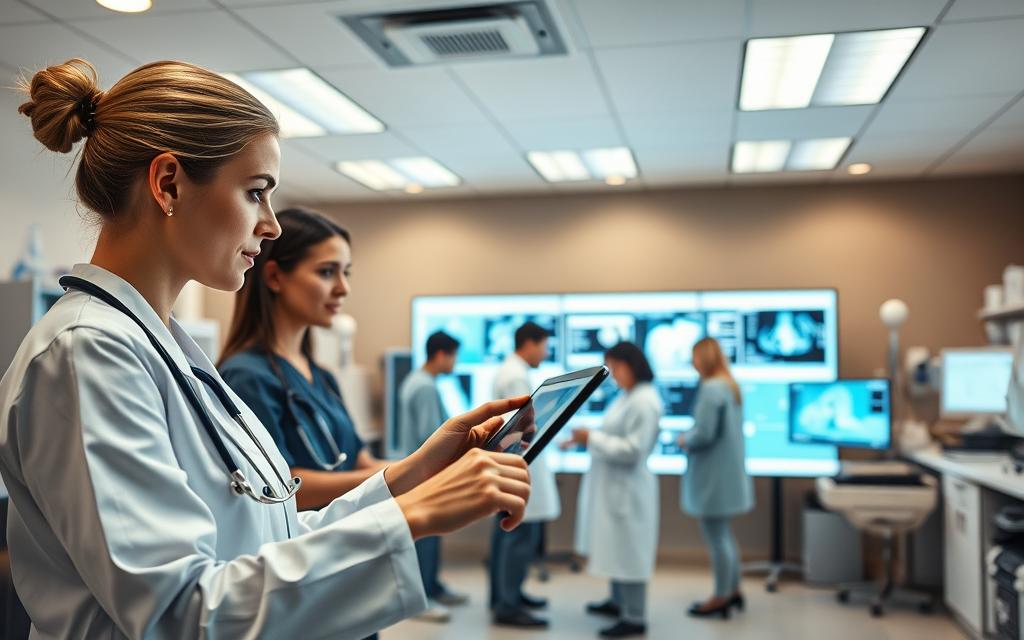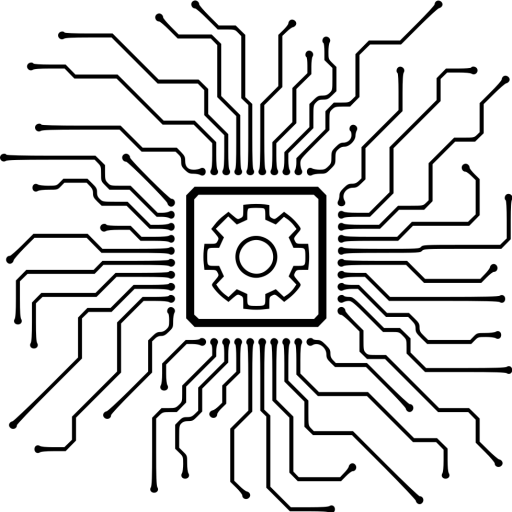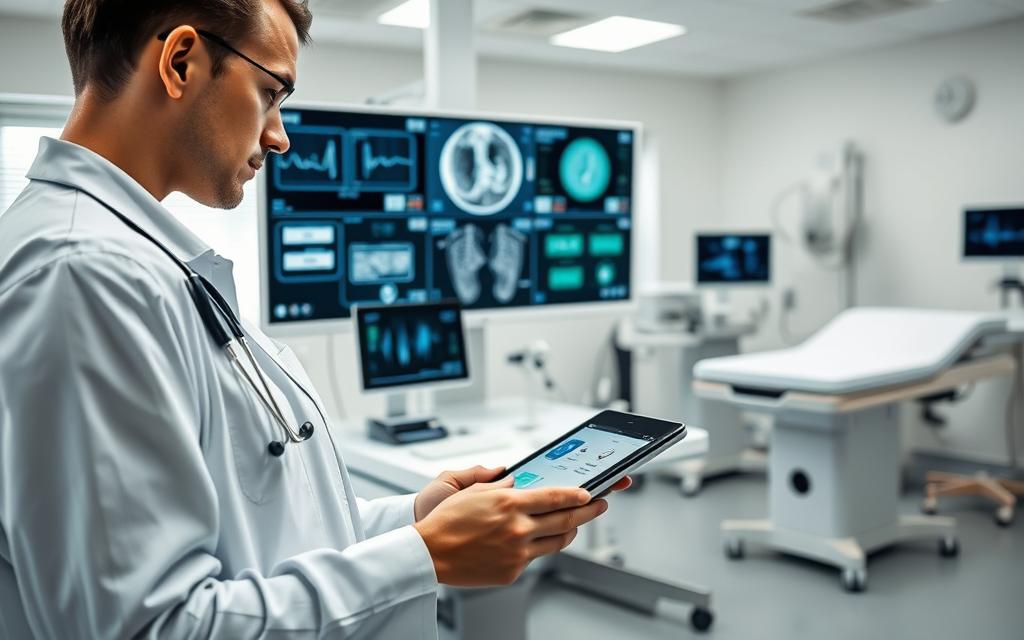Today’s healthcare relies on advanced systems for quality care. The role of medical professionals has changed a lot with technology.
Modern doctors and nurses use many digital systems. These help with both office work and patient care. They make things run smoother and keep patients safe.
Training programs teach students about these new tools. They learn about electronic health records and how to use diagnostic equipment.
Knowing healthcare technology is key for medical staff. Using these tools well means better management and care for patients.
Good education gives students real experience with medical tools and software. This makes them ready for today’s healthcare challenges.
Understanding Medical Assistant Technology in Modern Healthcare
Modern healthcare has seen a big change with digital technology. This change affects how medical assistants work. It makes patient care more connected.
Administrative tasks now use advanced healthcare systems. These systems help with things like scheduling and billing. Medical assistants need to learn how to use these systems every day.
Clinical tasks have also changed with new medical technology. Tools like digital diagnostic equipment are now common. Lab work is more accurate thanks to automated systems.
The use of electronic health records is a big step forward. These systems keep all patient information in one place. Medical assistants must keep up with these records and make sure they are safe.
This change in technology has many benefits. It makes healthcare more efficient and accurate. Patients get better care because of these systems.
Medical assistants play a key role in using technology to help patients. They need to keep learning about new tools and systems. Knowing about technology is as important as medical knowledge today.
Essential Electronic Health Records Systems
The move from paper to digital health records is a big step forward in healthcare tech. These systems make managing patient info easier, safer, and more organised. Medical assistants are key in keeping patient records up to date.

Today’s EHR systems do more than just keep records. They help doctors work better together, cut down on mistakes, and make practices run smoother. They are a key part of digital healthcare today.
Epic Systems Corporation Solutions
Epic Systems is a top choice for EHRs in healthcare. Their system brings together clinical, financial, and admin tasks in one place. Medical assistants like Epic’s easy-to-use design for managing patient data.
Epic’s strength is in linking different healthcare places through shared records. This makes care smoother when patients move. It also has tools for spotting trends and improving care.
Cerner Millennium Platform
Cerner Millennium is known for its easy sharing of data and smart analytics. It lets different healthcare groups share info easily. This helps doctors work together better.
Medical assistants like Cerner for making daily tasks easy. It also spots health risks early. Cerner keeps leading in digital healthcare with its updates.
Allscripts Professional EHR
Allscripts Professional EHR is great for combining clinical and admin tasks. It’s easy to use but has lots of features. This makes work flow better for everyone.
Medical assistants value Allscripts for its flexibility. It fits different specialities well. It also helps with patient records and managing money. Allscripts keeps improving to meet healthcare’s changing needs.
Each EHR system needs special training for medical assistants. Good training helps staff use these systems well. The best system depends on the practice’s size, speciality, and needs.
Medical Practice Management Software Tools
Medical assistants do more than just clinical work. They handle many administrative tasks that keep things running smoothly. Practice management systems are key to this, providing tools for managing daily business.
These systems change how practices handle patient flow, finances, and office tasks. They combine scheduling, billing, and records into one system. This means no need for separate solutions for each task.
Medical assistants use these tools for tasks like patient registration and scheduling. They also manage billing, claims, and inventory. This makes office work more efficient.
Using these systems reduces paperwork and errors. It makes practices more efficient and improves patient satisfaction. The right system can greatly reduce administrative work.
Athenahealth Practice Management
Athenahealth offers a cloud-based system for managing practices. It’s known for its strong revenue cycle management. The system gives real-time insights and automates tasks.
It has smart scheduling to save time and reduce no-shows. The billing module processes claims quickly, helping practices get paid faster.
Athenahealth connects practices with payers and offers benchmarking data. This cloud-based system keeps practices updated without manual effort.
NextGen Healthcare Solutions
NextGen Healthcare combines electronic health records with practice management. This unified approach improves information flow. It eliminates data silos.
The system has advanced patient engagement tools like online scheduling. It also offers detailed financial analytics. This helps practices understand their revenue and claims status.
NextGen’s workflow engine lets practices customise the system. It supports population health management through data aggregation and reporting.
| Feature Comparison | Athenahealth | NextGen Healthcare | Ideal Practice Size |
|---|---|---|---|
| Deployment Model | Cloud-based | On-premise or Cloud | Varies by preference |
| Revenue Cycle Management | Network-enabled | Integrated analytics | All practices |
| Patient Engagement | Basic portal | Advanced tools | Growing practices |
| Implementation Time | 3-6 months | 4-8 months | Consider timing needs |
| Customisation Options | Limited | Extensive | Specialised practices |
Both systems show how modern tools help medical assistants in administration. The choice depends on practice size, specialisation, and technology.
Implementing these systems needs careful planning. But, they bring big benefits like better efficiency and patient experiences. Medical assistants skilled in these tools are very valuable.
Diagnostic and Clinical Technology Equipment
Modern healthcare relies on advanced diagnostic tools for accurate patient checks. Medical assistants need to know how to use these tools. They help in precise diagnosis and make clinical work smoother.

Digital Vital Signs Monitors
Digital vital signs monitors are a big step forward in patient care. They automatically check vital signs like blood pressure and heart rate. This makes patient checks more thorough.
They measure:
- Blood pressure readings
- Heart rate monitoring
- Body temperature assessment
- Oxygen saturation levels
These devices cut down on mistakes made by manual checks. They show clear readings on screens that can be added to patient records. This makes sure patient care is always top-notch.
Electronic Stethoscopes and Otoscopes
Electronic stethoscopes make body sounds clearer, helping spot small issues. They also record sounds. This helps in making more accurate first checks.
Modern otoscopes show the ear in detail. They can take pictures and videos. This helps doctors see more clearly and talk about patient care.
These tools are key for better teamwork in healthcare. They share important information through sound and images.
Portable ECG Machines
Portable ECG machines have changed how we check the heart in clinics. Medical assistants use them for quick heart checks. It’s important to place the electrodes right for good readings.
These machines have:
- Touchscreen interfaces
- Automated recording functions
- Digital storage capabilities
- Wireless data transmission
Medical assistants run the machines, but doctors interpret the results. This equipment gives vital info for heart checks and keeping an eye on patients.
| Equipment Type | Primary Functions | Key Benefits | Training Considerations |
|---|---|---|---|
| Digital Vital Signs Monitors | Automated measurement of BP, pulse, temp, SpO2 | Reduced human error, EHR integration | Calibration procedures, error recognition |
| Electronic Stethoscopes | Amplified auscultation, sound recording | Enhanced audio quality, documentation | Proper placement techniques, maintenance |
| Electronic Otoscopes | Visual examination, image capture | High-resolution imaging, patient education | Sterilisation protocols, image management |
| Portable ECG Machines | Electrocardiogram recording, data transmission | Rapid assessment, remote monitoring | Electrode placement, artifact recognition |
Learning to use these tools well needs good training and practice. Medical assistants must know how to use and care for them. This skill makes patient care better and more efficient.
Healthcare places a lot of value on knowing how to use these tools well. This skill helps in collecting accurate data and making better decisions. Using these tools right is a key part of being a good medical assistant today.
Medical Assistant Training Programmes and Certification
Getting the right training and certification is key for those wanting to be medical assistants in the US. These courses give you the skills and knowledge needed for today’s healthcare jobs. Having a certification shows you’re good at your job and can lead to more career chances.
Healthcare education mixes classroom learning with hands-on training and real-world experience. This mix prepares you for the real healthcare world. Both learning in class and doing externships are important parts of good training.
Certified Medical Assistant (CMA) Requirements
The American Association of Medical Assistants offers the CMA credential. You need to finish an approved medical assistant course first. Then, you can take the exam. The process has a few main steps:
- Graduation from an accredited medical assistant programme
- Successful completion of the CMA certification examination
- Commitment to ongoing continuing education requirements
To keep your CMA, you need to recertify every five years. This keeps your skills up to date with new healthcare methods and tech.
Registered Medical Assistant (RMA) Certification
American Medical Technologists gives the RMA certification. You can get it through different education and work paths. The exam tests your knowledge in many areas of medical assisting.
Having an RMA shows you’re good at both office and clinical work. You need to show your education and pass the exam. Like the CMA, you must recertify to stay active.
Accredited Training Programmes in the United States
Accredited medical assistant courses are found all over the US. They mix learning with real-world experience. Prism Career Institute is a good example of these programs.
At Prism Career Institute, the course lasts 40 weeks with 420 hours of class time. It includes online learning and classroom teaching. Students also do a 150-hour externship to get real experience.
Other programs around the country are similar. They mix learning with doing to make sure graduates are ready for work.
| Programme Feature | Classroom Instruction | Externship Hours | Total Duration |
|---|---|---|---|
| Prism Career Institute | 420 lecture hours | 150 hours | 40 weeks |
| Typical Range | 400-600 hours | 120-200 hours | 9-12 months |
| Online Components | Variable | On-site required | Flexible options |
Accreditation means the program meets high standards. Always check if a program is accredited before you sign up. This makes sure your education is good enough for certification.
Finishing an accredited program is the first step to becoming a certified medical assistant. These programs give you the knowledge and skills you need for a career in healthcare.
Career Opportunities and Advancement Paths
Medical assistants with strong tech skills find many rewarding career paths today. They combine clinical skills with digital know-how for growth and specialisation.

Specialisation Areas for Medical Assistants
Medical assistants with tech skills can choose from many specialisations. Each area needs extra training in specific tech and procedures.
Some popular specialisations include:
- Pediatrics – Using electronic growth charts and child-friendly diagnostic tools
- Geriatrics – Working with software for chronic disease management and mobility checks
- Cardiology – Handling advanced ECG machines and cardiac stress tests
- Oncology – Managing systems for chemotherapy and patient monitoring
New tech roles are changing the medical assistant job. Roles like EHR specialists and telehealth coordinators are exciting. They use tech to better patient care and make healthcare more efficient.
Continuing Education and Professional Development
Medical assistants need to keep learning to advance. The tech in healthcare changes fast, so skills must keep up.
Good ways to develop include:
- Specialised certification in healthcare tech
- Workshops on new medical software and tools
- Training from employers on new tools
- Online courses on electronic health records
- Conferences on healthcare tech trends
Many healthcare places help with training costs or pay for extra qualifications. This helps medical assistants move up to more roles, like supervising or focusing on tech.
Being good with tech helps medical assistants move up. They can get jobs with more responsibility and better pay. Staying up-to-date with tech opens doors to leadership and special roles in medicine.
Conclusion
Medical assistants today must embrace technology to thrive in modern healthcare. Skills in tools like Epic Systems and electronic health records are now essential. This integration boosts efficiency, accuracy, and patient care quality.
The healthcare technology future demands continuous learning and adaptation. Aspiring professionals should pursue accredited training programmes that offer hands-on experience. Such preparation is vital for a successful medical assisting career.
Technology adoption will keep shaping roles, creating new opportunities. Staying updated with innovations ensures medical assistants remain valuable in evolving practices. Invest in skills today to excel tomorrow.







